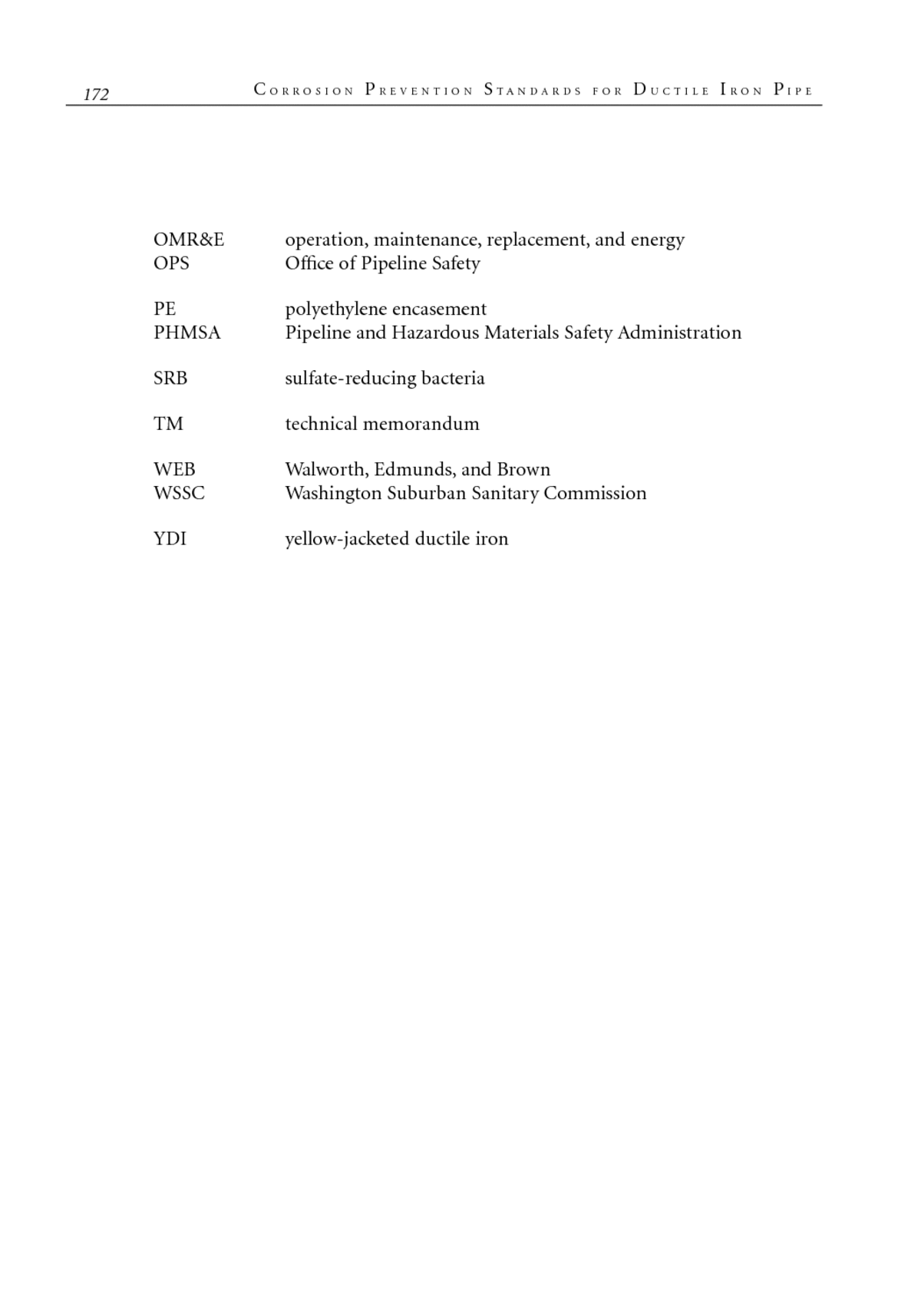Below is the uncorrected machine-read text of this chapter, intended to provide our own search engines and external engines with highly rich, chapter-representative searchable text of each book. Because it is UNCORRECTED material, please consider the following text as a useful but insufficient proxy for the authoritative book pages.
Appendix E Acronyms ANSI American National Standards Institute ASCE American Society of Civil Engineers AWWA American Water Works Association CIP cast iron pipe CLSM controlled low-strength material CP cathodic protection dc direct current DDM Design Decision Model DIP ductile iron pipe DIPRA Ductile Iron Pipe Research Association DOT U.S. Department of Transportation ER electrical resistance IMP Integrity Management Program MIC microbiologically influenced corrosion NACE National Association of Corrosion Engineers NBS National Bureau of Standards (now National Institute of Standards and Technology [NIST]) 171
172 Corrosion Prevention Standards for Ductile Iron Pipe OMR&E operation, maintenance, replacement, and energy OPS Office of Pipeline Safety PE polyethylene encasement PHMSA Pipeline and Hazardous Materials Safety Administration SRB sulfate-reducing bacteria TM technical memorandum WEB Walworth, Edmunds, and Brown WSSC Washington Suburban Sanitary Commission YDI yellow-jacketed ductile iron


